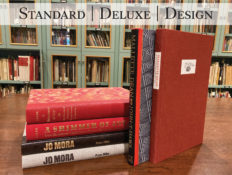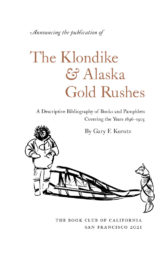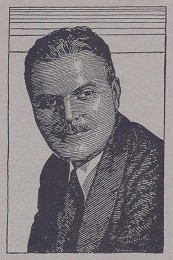[two_fifth]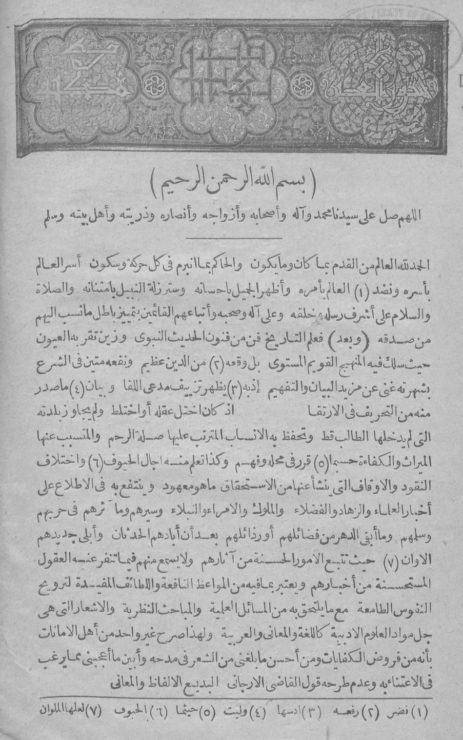
[/two_fifth][three_fifth_last]
[toggle title=”Rediscovering the Islamic Classics: How Editors and Print Culture Transformed an Intellectual Tradition
Monday, December 13, 2021, 5-6:15 PM
* A live, online presentation
“]
Islamic book culture dates back to late antiquity, when Muslim scholars began to write down their doctrines on parchment, papyrus, and paper and then to compose increasingly elaborate analyses of, and commentaries on, these ideas. Movable type was adopted in the Middle East only in the early nineteenth century, and it wasn’t until the second half of the century that the first works of classical Islamic religious scholarship were printed there. But from that moment on the technology of print transformed Islamic scholarship and Arabic literature.
In the first wide-ranging account of the effects of print and the publishing industry on Islamic scholarship, El Shamsy tells the fascinating story of how a small group of editors and intellectuals brought forgotten works of Islamic literature into print and defined what became the classical canon of Islamic thought. Through the lens of the literary culture of nineteenth- and twentieth-century Arab cities―especially Cairo, a hot spot of the nascent publishing business―he explores the contributions of these individuals, who included some of the most important thinkers of the time. Through their efforts to find and publish classical literature many nearly lost works were recovered, disseminated, and harnessed for agendas of linguistic, ethical, and religious reform.
Bringing to light the agents and events of the Islamic print revolution, Rediscovering the Islamic Classics is an absorbing examination of the central role printing and its advocates played in the intellectual history of the modern Arab world.
A live online presentation by Ahmed El Shamsy, author and associate professor of Islamic thought at the University of Chicago
[/toggle] [/three_fifth_last] [clear]
[two_fifth]
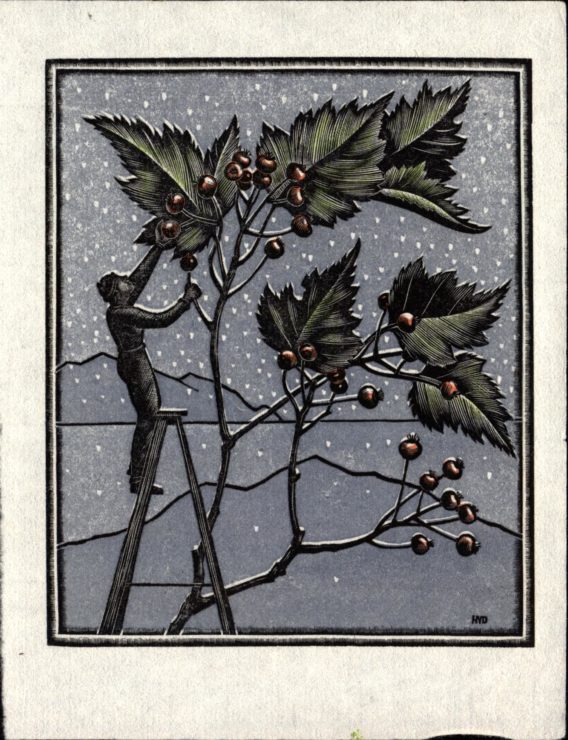
[/two_fifth][three_fifth_last]
[toggle title=”Mallette Dean, A Printmaker and His Art
Saturday, December 11, 2021, 1-2:00 PM
* A live, in-person event at the American Bookbinders Museum
“]
John Hawk will give an illustrated talk on the career of Mallette Dean (1907-1975). A major figure in the history of the fine press book in California, Dean was a prolific artist whose career as a printmaker, painter, muralist, illustrator, and letterpress printer spanned several decades. He designed, illustrated, and printed several titles for the Book Club of California and contributed initials and ornaments to dozens of books published by eminent California presses. His story is that of a successful artist and printmaker whose paintings, wood engravings, and linocuts were exhibited across the country, and whose books and illustrations received widespread acclaim. The illustrated talk will include a close look at rarely seen holiday prints which Dean created for his friends and associates.
A live presentation by John Hawk, head librarian, Special Collections & University Archives at the University of San Francisco, and past president of the Book Club of California.
American Bookbinders Museum, 355 Clementina Street, San Francisco, CA 94103
[/toggle] [/three_fifth_last]
[two_fifth]
[/two_fifth][three_fifth_last]
[toggle title=”Your Collection: Deaccessioning Strategies
Monday, November 22, 2021, 5-6:15 PM
* A live, online presentation
“]
*** Part of the Book Club’s series for Book Collectors ***
Collectors are custodians. The materials that make up their collections are, in most cases, temporarily orbiting around the ideas that ground the collection.
Your Collection: Deaccessioning Strategies deals directly with late stage collecting and available strategies for those considering “what’s next” for their collections based on the contents, intentions, and time frames available.
We will explore when one is ‘ready’ to consider these questions and what one must do to prepare for the process.
A live online presentation by Spencer W. Stuart, collections advisor
[/toggle] [/three_fifth_last]
[two_fifth]
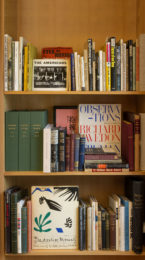 [/two_fifth][three_fifth_last]
[/two_fifth][three_fifth_last]
[toggle title=”The Reva and David Logan Collection of Photographic Books
Monday, November 15, 2021, 5-6:15 PM
* A live, online presentation
“]
The Reva and David Logan Collection of Photographic Books at The Bancroft Library at University of California, Berkeley is an outstanding collection of roughly 1,500 books and periodicals about photography in all its forms.
Amassed over several decades by Chicago-based philanthropists (and art lovers) Reva and David Logan, the Collection is particularly strong in “fine art” photography by such masters as Alfred Stieglitz, Ansel Adams, Edward Weston, and others; documentary photography and photojournalism in the United States and Europe; portraiture; and early photographic manuals.
The Logans were also interested in the early history of the medium. They acquired rare, mint-condition editions by some of photography’s earliest practitioners, including Thomas Annan, Peter Henry Emerson, Julia Margaret Cameron, and Eadweard Muybridge.
Many of these books are first editions, signed by the artists themselves. Periodicals form another strength of the Collection, which includes over 50 serials and journals. These range from long runs of well-known photographic magazines such as Aperture and U.S. Camera to scarce journals such as Photo Notes and Minority Photographer’s Newsletter. This talk will provide an overview of this wonderful collection and highlight some favorites.
A live online presentation by Christine Hult-Lewis, PhD, curator of the Logan Collection and the interim curator of the Pictorial Collection at The Bancroft Library.
[/toggle] [/three_fifth_last] [clear]
[two_fifth]
[/two_fifth][three_fifth_last]
[toggle title=”Exhibition Opening: Standard/Deluxe/Design: Bindings of the Book Club of California
Saturday, November 13, 2021, 4:30-6:30 PM
* A live, in-person event at the American Bookbinders Museum
“]
The Book Club of California has played a major role in the history and preservation of the arts of fine printing in California for over a century. Its books are carefully conceived, thoughtfully designed, and attractively printed in limited editions, often by the foremost fine press printers in the country. Standard/Deluxe/Design looks at the bindings of these finely made books, displaying covers from the publication history of the Book Club of California, its new tradition of deluxe editions, and a selection of Book Club publications with unique covers created by noted California bookbinders. Remarks by Elizabeth Newsom, librarian, Book Club of California.
On view: November 13, 2021 through February 26, 2022
American Bookbinders Museum
355 Clementina Street, San Francisco, CA 94103
[/toggle] [/three_fifth_last] [clear]
[two_fifth]
[/two_fifth][three_fifth_last]
[toggle title=”The Klondike and Alaska Gold Rushes: A Descriptive Bibliography of Books and Pamphlets Covering the Years 1896-1905
Monday, October 25, 2021, 6-7:15 PM
*A live streaming YouTube event”]
A live online presentation to celebrate the release of the Book Club of California’s 241st publication The Klondike and Alaska Gold Rushes by Gary F. Kurutz. A decade in the making, this essential reference work is devoted to the last of the great gold stampedes driven by individual miners rather than corporate mining companies. Remarks by the author and others. Members can pre-order this publication now. This event will be live streamed on YouTube.
[/toggle] [/three_fifth_last] [clear]
[/two_fifth][three_fifth_last]
[toggle title=”2021 Oscar Lewis Awards
Monday, October 18, 2021, 6-7:15 PM
*A live streaming YouTube event”]
The Oscar Lewis Awards were established by the Book Club of California in 1994 in honor of Oscar Lewis (1893-1992), San Francisco author, historian, and club secretary from 1921-1946. Awards for achievement in Western History and the Book Arts are awarded each year. The Book Club of California will hold a small private event to celebrate the recipients of the 2021 Oscar Lewis Awards: Charles Fracchia for his contributions to Western History and Wesley B. Tanner for his contributions to the Book Arts. 2020 award recipients John Briscoe, Mary Austin, and Kathleen Burch will also be honored. This event will be live streamed on YouTube.
[/toggle] [/three_fifth_last] [clear]
[two_fifth]
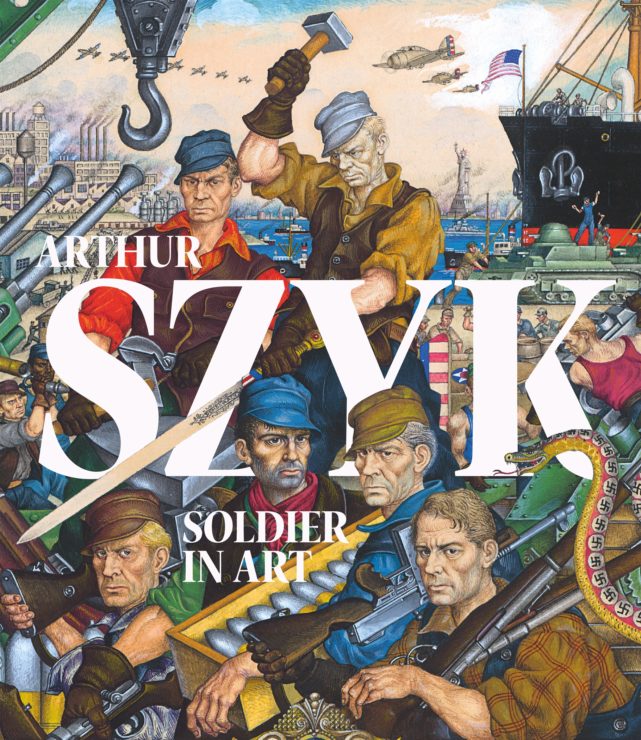
[/two_fifth][three_fifth_last]
[toggle title=”Arthur Szyk: Soldier in Art
Monday, September 27, 2021, 5-6:15 PM
*A live online presentation”]
Arthur Szyk often said “Art is not my aim, it is my means.” Yet, his contemporaries praised him as the greatest illuminator-artist since the 16th century. He saw himself as a fighting artist, enlisting his pen and paintbrush as his weapons against hatred, racism, and oppression before, during, and after World War II. As the leading anti-Nazi artist in America during the war, Szyk also created the important and widely circulated art for the rescue of European Jewry. His Passover Haggadah has been acclaimed as “worthy of being considered as one of the most beautiful books ever produced by the hand of man.” The presentation Arthur Szyk: Soldier in Art will expose the viewer to the breadth and depth of the power, purpose, and persuasion of the great artist and the great man.
A live online presentation by Irvin Ungar, author, bookseller, and founder, Historicana
[/toggle] [/three_fifth_last] [clear]
[two_fifth]
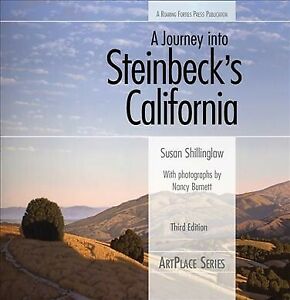
[/two_fifth][three_fifth_last]
[toggle title=”A Journey into Steinbeck’s California
Monday, September 20, 2021, 5-6:15 PM
*A live online presentation”]
This part art book, part biography, and part travel guide offers insight into how landscapes and townscapes influenced John Steinbeck’s creative process and how, in turn, his legacy has influenced modern California. Various types of readers will appreciate the information in this guide literary pilgrims will learn more about the state featured so prominently in Steinbeck’s work, tourists can visit the same buildings that he lived in and wrote about, and historians will appreciate the engrossing perspective on daily life in early and mid 20th-century California. Offering an entirely new perspective on Steinbeck and the people and places that he brought to life in his writing, this edition includes a wonderful variety of photographs, sketches, and paintings, including some from private, rarely seen collections. The book features a discussion on Steinbeck’s ecological interests and activities, and an extended exploration of his many travels to Mexico. Readers will find delight in this depiction of the symbiotic relationship between an author and his favorite places.
A live online presentation by Susan Shillinglaw, author and professor of English at San Jose State University
[/toggle] [/three_fifth_last] [clear]
[two_fifth]
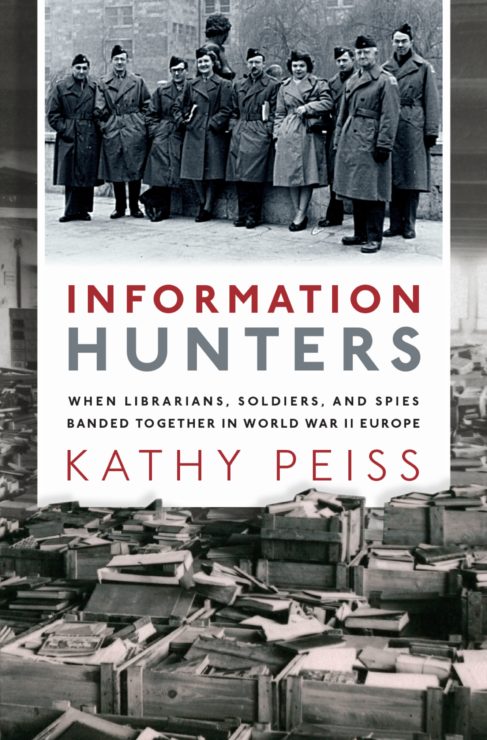
[/two_fifth][three_fifth_last]
[toggle title=”Information Hunters: When Librarians, Soldiers, and Spies Banded Together in World War II Europe
Monday, September 13, 2021, 5-6:15 PM
*A live online presentation”]
An unlikely band of librarians, archivists, and scholars came together during World War II, their war effort centered on collecting books and documents. These American civilians were galvanized by the events of war into acquiring and preserving the written word, as well as providing critical information for intelligence purposes. Setting off on missions across Europe, they gathered enemy publications in the spy-ridden cities of Stockholm and Lisbon, searched for records in liberated Paris and the rubble of Berlin, seized Nazi works from bookstores and schools, and unearthed millions of books hidden in German caves and mineshafts. Improvising library techniques in wartime conditions, they contributed to Allied intelligence, safeguarded endangered collections, restituted looted books, and built up the international holdings of leading American libraries for the postwar period.
In this talk, Kathy Peiss discusses how book and document collecting became part of the new apparatus of intelligence and national security, military planning, and postwar reconstruction. She focuses on ordinary Americans who found themselves in extraordinary situations, making decisions on the ground to acquire sources that would be useful in war zones and on the home front. Librarians’ and scholars’ skills, expertise, and aspirations aligned closely with American military and political objectives. Their activities helped transform American research libraries into great international repositories, shaped policies toward cultural heritage, and spurred the development of information science. Illuminating an unusual period when libraries and the military, intelligence and cultural heritage were closely intertwined, Peiss offers a historical perspective on contemporary debates over the uses of books and information in times of war and peace.
A live online presentation by Kathy Peiss, author and Roy F. and Jeannette P. Nichols Professor of American History, University of Pennsylvania
[/toggle] [/three_fifth_last] [clear]
[two_fifth]
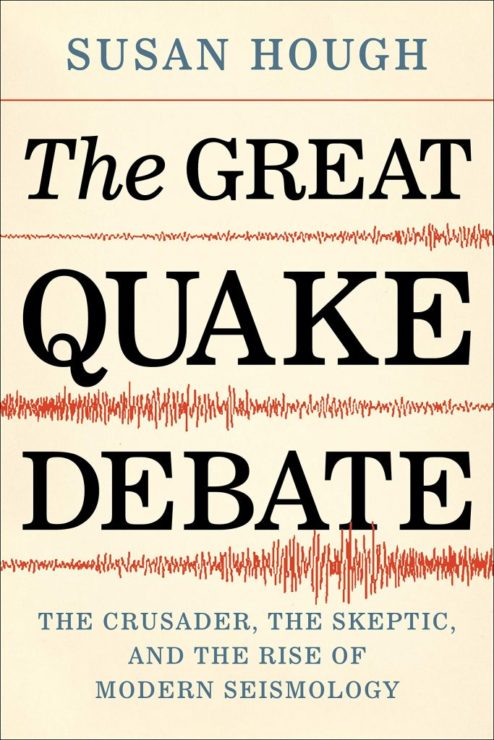
[/two_fifth][three_fifth_last]
[toggle title=”Earthquake Hazard in the Southland: The Great Quake Debate
Monday, August 30, 2021, 5-6:15 PM
*A live online presentation”]
Sometimes something is so well-known, we forget that somebody figured it out in the first place. Any modern Californian does not need to be told that earthquakes are a real and present danger in most of California, including the greater Los Angeles area. But over the decades after the 1906 San Francisco earthquake, the severity of earthquake hazard in the Los Angeles region was the subject of heated debate.
“The Great Quake Debate” describes this pivotal chapter, focusing on intertwined biographies of two geologists — brilliant scientists and compelling individuals both — who came to personify the debate on a public stage, Bailey Willis and Robert T. Hill. On its face, The Great Quake Debate pitted science against “business interests,” but the story turns out to be so much more than that.
A live online presentation by Susan Hough, Ph.D., author, editor, and research seismologist
[/toggle] [/three_fifth_last] [clear]
[two_fifth]
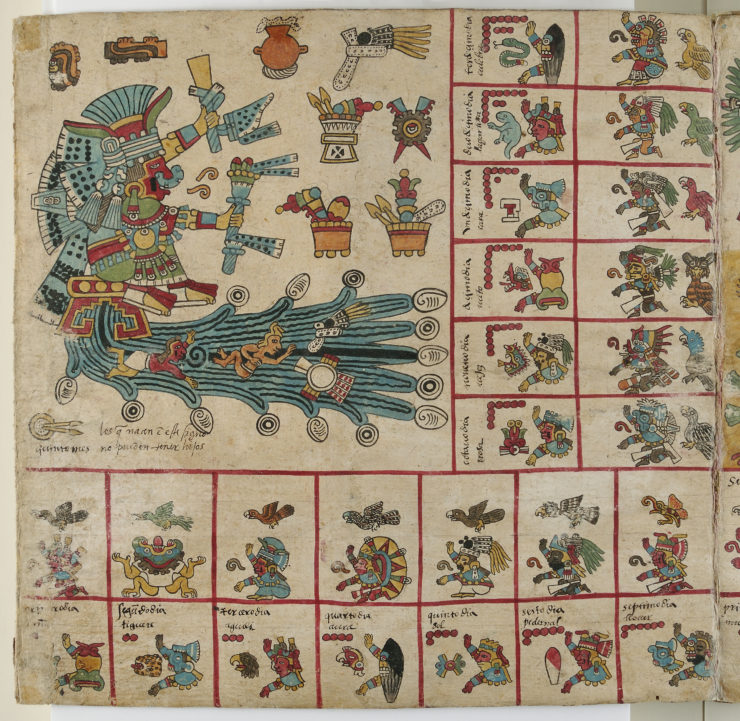
[/two_fifth][three_fifth_last]
[toggle title=”Aztec Codices: An Introduction to their Form and Contents
Monday, August 16, 2021, 5-6:15 PM
*A live online presentation”]
Before the Spanish invasion and conquest, the Aztec peoples produced books that served multiple functions. Two of the main genres of books were religious books and histories. Others served more bureaucratic purposes, such as tribute lists and genealogies. Information was recorded in these books using a pictorial system of writing in which the bulk of information was recorded visually using standardized iconography and pictorial conventions. Specific information (names of people and places), was conveyed through hieroglyphic compounds that effectively “spelled” words with little ambiguity. The Aztec pictorial writing system, then, blurs the boundaries between art and text and painting and writing, and Aztec manuscripts were filled with visual texts that allowed for open interpretations.
Aztec books (often called “codices”) were not the inflexible bound books typical of Europe. Aztec books were made of long sheets of paper – of deer hide or bark fiber – that were coated with gesso and then painted and folded accordion-style. A bound book reveals two pages at any one time, but a screenfold document can display any or all pages at once. The screenfold format allowed for maximum flexibility in use and further enhanced the interpretive potential of the Aztec manuscripts.
The Spaniards understood the significance of these books for the Native peoples because they specifically targeted Aztec royal archives and temples, burning the books that were housed inside. Today few pre-conquest manuscripts from the Aztec world survive.
This presentation offers an introduction to these Aztec codices, explaining their pictorial system of writing, the material form of the books, and their varied contents. The persistence of this traditional system of writing and book making into the colonial period reveals the lasting power of books for the Native peoples.
A live online presentation by Lori Boornazian Diel, Professor of Art History, Texas Christian University
[/toggle] [/three_fifth_last] [clear]
[two_fifth]

[/two_fifth][three_fifth_last]
[toggle title=”The Forgotten Homesteaders of California
Monday, August 9, 2021, 5-6:15 PM
*A live online presentation”]
In 1862 President Abraham Lincoln signed the Homestead Act, the most ambitious and sweeping social policy in the history of the United States. In the Golden State more than a hundred thousand people filed homesteading claims between 1863 and the late 1930s. More than sixty thousand Californians succeeded, claiming about ten million acres.
In his book, Backcountry Ghosts, Josh Sides tells the histories of these Californian homesteaders, their toil and enormous patience, successes and failures, doggedness in the face of natural elements and disasters, and resolve to defend hard-earned land for themselves and their children. While some of these homesteaders were fulfilling the American Dream—that all Americans should have the opportunity to own land regardless of their background or station—others used the Homestead Act to add to already vast landholdings or control water or mineral rights.
Sides recovers the fascinating stories of individual homesteaders in California, both those who succeeded and those who did not, and the ways they shaped the future of California and the American West. Backcountry Ghosts reveals the dangers of American dreaming in a state still reeling from the ambitions that led to the Great Recession.
A live online presentation by Josh Sides, author and Whitsett Professor of California History, California State University at Northridge
[/toggle] [/three_fifth_last] [clear]
[two_fifth]
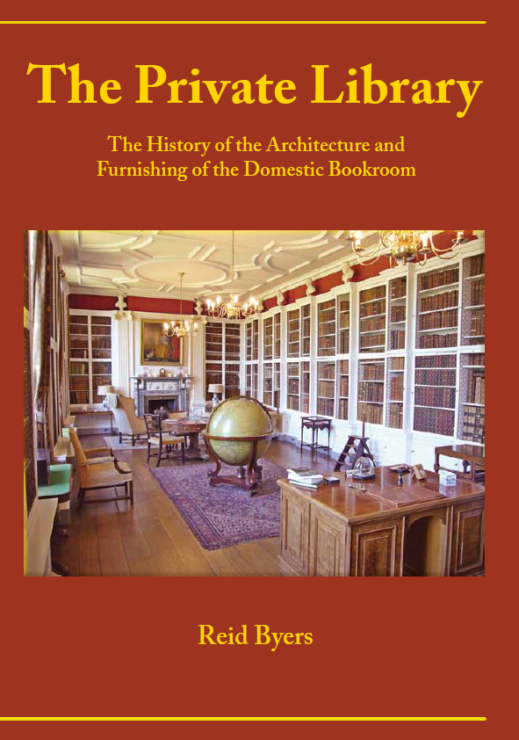
[/two_fifth][three_fifth_last]
[toggle title=”The Private Library: The History of the Architecture and Furnishing of the Domestic Bookroom
Monday, July 26, 2021, 5-6:15 PM
*A live online presentation”]
The Private Library is the domestic bookroom: that quiet, book-wrapt space that guarantees its owner that there is at least one place in the world where it is possible to be happy.
The story of its architecture extends back almost to the beginning of history and forward toward a future that is in equal parts amazing and alarming.
In his book, The Private Library: The History of the Architecture and Furnishing of the Domestic Bookroom, Reid Byers examines with a sardonic eye the historical influences that have shaped the architecture of the private library, and the furnishings, amenities, and delightful anachronisms that make the mortal room into what Borges so famously called Paradise.
A live online presentation by Reid Byers, author, exhibition curator, and vice president of the Baxter Society
[/toggle] [/three_fifth_last] [clear]
[two_fifth]
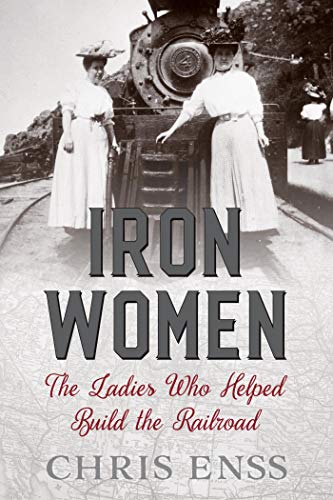
[/two_fifth][three_fifth_last]
[toggle title=”Iron Women: The Ladies Who Helped Build the Railroad
Monday, July 19, 2021, 5-6:15 PM
*A live online presentation”]
When the last spike was hammered into the steel track of the Transcontinental Railroad on May 10, 1869, at Promontory Point, Utah, Western Union lines sounded the glorious news of the railroad’s completion from New York to San Francisco.
For more than five years an estimated four thousand men moved like a vast assembly line toward the end of the track. Editorials in newspapers and magazines praised the accomplishment and some boasted that the work that “was begun, carried on, and completed solely by men.” Godey’s Lady’s Book even reported “No woman had laid a rail and no woman had made a survey.”
Although the physical task of building the railroad had been achieved by men, women made significant and lasting contributions to the historic operation.
The female connection with railroading dates as far back as 1838 when women were hired as registered nurses/stewardesses in passenger cars. Beyond nursing and service roles, however, women played a larger part in the actual creation of the rail lines than they have been given credit for.
Author Chris Enss shares the stories of women who helped build the railroad in her book Iron Women.
A live online presentation by Chris Enss, author and screenwriter
[/toggle] [/three_fifth_last] [clear]
[two_fifth]
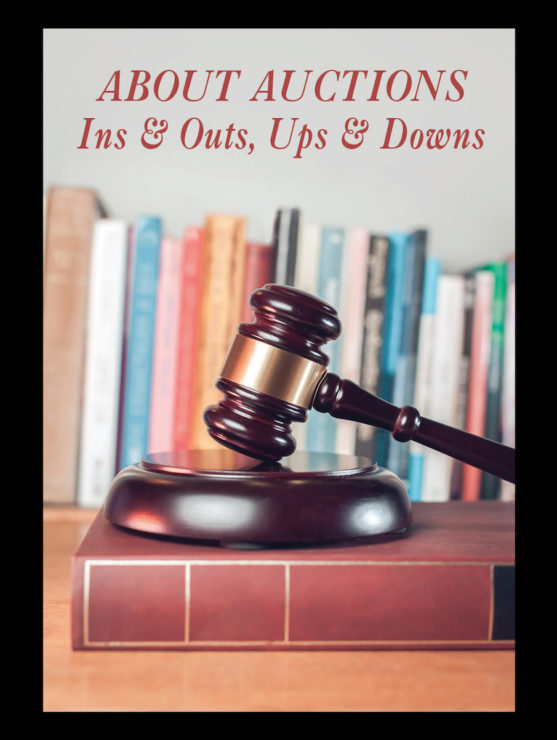
[/two_fifth][three_fifth_last]
[toggle title=”About Auctions: Ins & Outs, Ups & Downs
Monday, July 12, 2021, 5-6:15 PM
*A live online presentation”]
*** Part of the Book Club’s series for Book Collectors ***
Premiums? Shipping costs? Commissions? After sale offers?
The auction house, at times, can be a blackbox for those who do not regularly engage with them. Often we only hear of auction houses’ “Blue Chip” sales reported in the media.
In this talk, Spencer W. Stuart sidesteps the spectacle to focus on the process and how it can be a tool of a diverse character for collectors developing as well as deaccessioning their collections.
Taking a multi-perspective approach, he will discuss the specific interests of those involved, following the auction process step-by-step and illustrating the dynamics of each through case studies drawn from his auction and private advisory experience.
Through his presentation and the ensuing conversation, About Auctions will offer the Who, What, When, Where, How and Why of auctions and help attendees develop a practical and holistic view of the ‘Auction World’.
A live online presentation by Spencer W. Stuart, collections advisor
[/toggle] [/three_fifth_last] [clear]
[two_fifth]
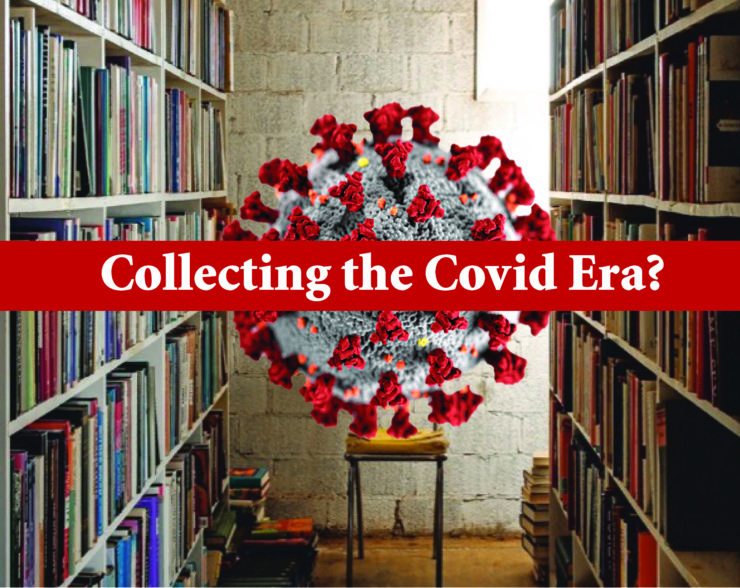
[/two_fifth][three_fifth_last] [toggle title=”Collecting the Covid Era?
Monday, June 28, 2021, 5-6:15 PM
*A live online presentation”]
The year 2020 began with the World Health Organization’s announcement of a cluster of pneumonia cases that quickly evolved to become the largest health crisis the planet has experienced in over 100 years. By examining books, broadsides and ephemeral items created during an earlier and longer-lasting health crisis, former Book Club of California president Randall Tarpey-Schwed will reflect on what we can learn from such objects, and how they can help us to humanize statistics and to better understand the times. He will also offer suggestions about potential collecting areas for those wishing to acquire objects being created today that might help us to better understand and humanize the Covid era.
A live online presentation by Randall Tarpey-Schwed, author and collector
[/toggle] [/three_fifth_last] [clear]
[two_fifth]
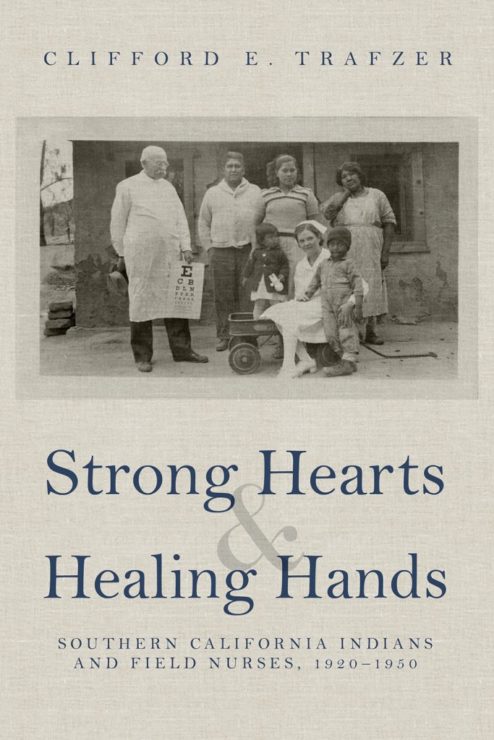
[/two_fifth][three_fifth_last] [toggle title=”Strong Hearts and Healing Hands: Southern California Indians and Field Nurses, 1920–1950
Monday, June 21, 2021, 5-6:15 PM
*A live online presentation”]
In 1924, the United States began a bold program in public health. The Indian Service of the United States hired its first nurses to work among Indians living on reservations. This corps of white women were dedicated to improving Indian health. In 1928, the first field nurses arrived in the Mission Indian Agency of Southern California. These nurses visited homes and schools, providing public health and sanitation information regarding disease causation and prevention.
Over time, field nurses and Native people formed a positive working relationship that resulted in the decline of mortality from infectious diseases. Many Native Americans accepted and used Western medicine to fight pathogens, while also continuing Indigenous medicine ways. Nurses helped control tuberculosis, measles, influenza, pneumonia, and a host of gastrointestinal sicknesses. In partnership with the community, nurses quarantined people with contagious diseases, tested for infections, and tracked patients and contacts. Indians turned to nurses and learned about disease prevention. With strong hearts, Indians eagerly participated in the tuberculosis campaign of 1939–40 to x-ray tribal members living on twenty-nine reservations. Through their cooperative efforts, Indians and health-care providers decreased deaths, cases, and misery among the tribes of Southern California.
Author Clifford E. Trafzer will talk about this incredible period in California history, one captured in his book Strong Hearts and Healing Hands: Southern California Indians and Field Nurses, 1920–1950.
A live online presentation by Clifford E. Trafzer, author and Distinguished Professor of History and Rupert Costo Chair in American Indian Affairs at the University of California, Riverside
[/toggle] [/three_fifth_last] [clear]
[two_fifth]
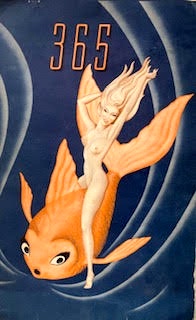
[/two_fifth][three_fifth_last] [toggle title=”Yesterday’s Specials: A Selection of Rare Restaurant Menus & Cocktail Lists, 1940-1990
Monday, June 14, 2021, 5-6:15 PM
*A live online presentation”]
In this talk Liz Pollock will discuss many of the historic changes in menu design.
Originally it was just one of several decisions the restaurateur would make: How would the menu reflect the heart of the brand? Old-world or exotic – perhaps a Tiki atmosphere? Classy or flashy? The choice of artwork and graphics promoted the ambience and special personality of the establishment. All of the lunch and dinner selections, the prices, the wine list, and the specialties of the house – were carefully planned to prepare the employees for when the customers and tourists arrived.
Pollock will share the many problems and predicaments faced by restaurant owners during World War II; when during a self-imposed paper shortage, and due to financial restrictions, restaurant menus went through radical design changes.
The Art Deco menu designs of the 1920s and 1930s with their fancy highlights of gold and glitter were now a thing of the past. Menus designed for use in the war years were now printed on an inexpensive quality of paper, often using a single page. Paper mills were currently doing war work assignments and former mill workers and shop printers may have already been drafted.
Pollock will share examples of menus from famous restaurants including Bimbo’s 365, Trader Vic’s, Bergez-Frank’s Old Poodle Dog, the Ambassador Hotel, The Brown Derby, the Waldorf-Astoria, the Four Seasons and The Russian Tea Room.
A live online presentation by Liz Pollock, author, collector, and bookseller
[/toggle] [/three_fifth_last] [clear]
[two_fifth]
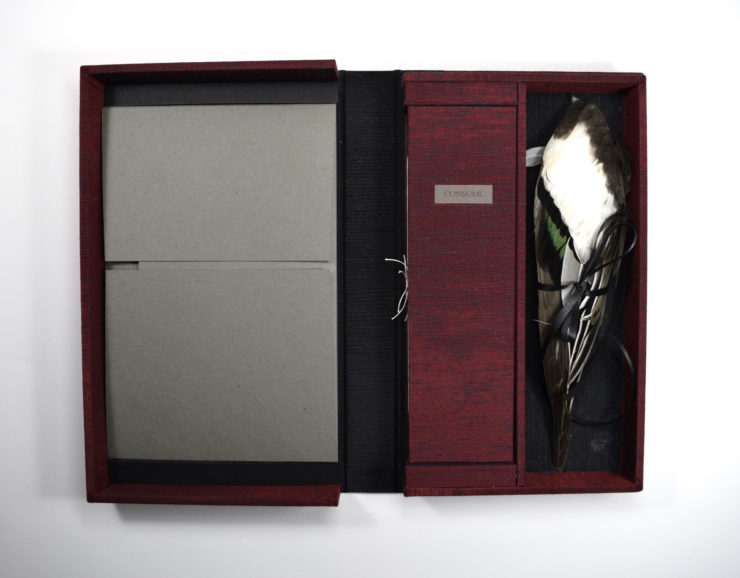
[/two_fifth][three_fifth_last] [toggle title=”Artist’s Books and the Anthropocene
Monday, May 24, 2021, 5-6:15 PM
*A live online presentation”]
Keri Miki-Lani Schroeder’s artist’s books explore the ways that humans utilize and impact the environment. Her work combines traditional and contemporary printing and bookbinding techniques with found objects to construct narrative. In this talk, Schroeder discusses her recent bookworks focusing on species extinction in the 20th century. Her current project about the extinct Floridian dusky seaside sparrow involves tracking down the last specimen to perish, and interviewing ornithologists who worked on the duskies’ preservation efforts.
A live online presentation by Keri Miki-Lani Schroeder, book artist and proprietor of Coyote Bones Press
[/toggle] [/three_fifth_last] [clear]
[two_fifth]
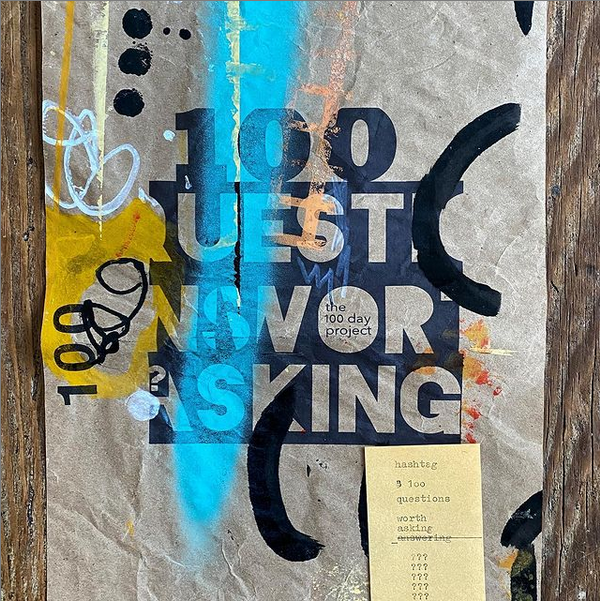
[/two_fifth][three_fifth_last] [toggle title=”100 questions worth asking: a Letterpress Exploration in Quarantine
Monday, May 17, 2021, 5-6:15 PM
*A live online presentation”]
During the extraordinarily singular year of 2020, book artist e bond decided to re-ignite an old writing project about the creative process. As a way back into the project, she participated in an online exercise where she shared a question for 100 days. The questions began as creative prompts about process but soon evolved into questions about life. What came next was a month long visual exploration of those questions into letterpress & mixed-media prints. This talk explores how e bond got from there to here and the work that was made during the past year.
A live online presentation by e bond, book artist and owner, roughdrAftbooks
[/toggle] [/three_fifth_last] [clear]
[two_fifth]
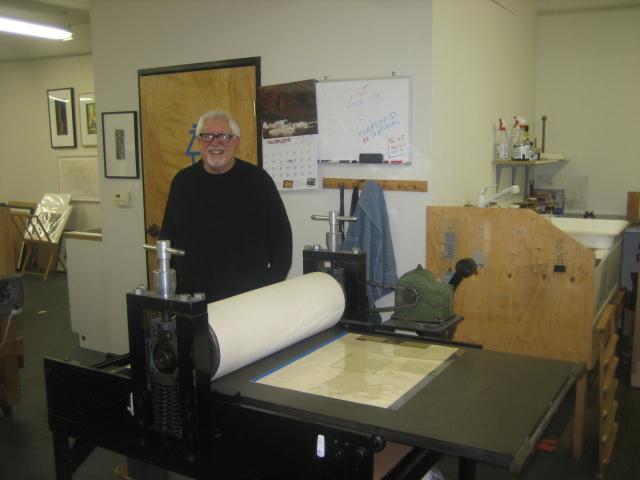
[/two_fifth][three_fifth_last] [toggle title=”How Simon Blattner became a Curator of Handmade Books and Lost a Lot of Money
Monday, May 10, 2021, 5-6:15 PM
*A live online presentation”]
Join us for an amusing and constructive conversation with Simon Blattner about print, handmade books, and curating. Blattner will discuss how he put together an exhibition of Handmade Books from Mexico. Before going to Mexico, Blattner did not know any of the artists that were featured in the exhibition. His hectic travels around Mexico will make you laugh and hopefully inspire you to make your own artistic leap of faith. Prior to curating exhibitions, Simon learned paper making at Magnolia Editions and owned a print studio, Eastside Editions. His lessons are a primer for how to lose your mind and money, make some great intaglio prints and books, and craft beautiful pieces of art.
Blattner has made a vow to never leave the world of handmade books and print. He wrote of his adventures in Mexico and the resulting exciting exhibition in his book “Libros de Artista” published last year.
A live online presentation by Simon Blattner, owner and publisher, Eastside Editions
[/toggle] [/three_fifth_last] [clear]
[two_fifth]
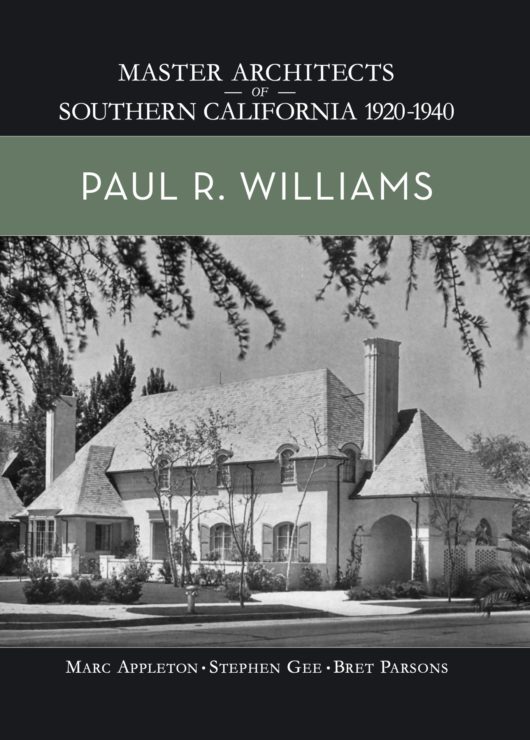
[/two_fifth][three_fifth_last] [toggle title=”Master Architects of Southern California 1920-1940: Paul R. Williams
Monday, April 26, 2021, 5-6:15 PM
*A live online presentation”]
Exploring the Work of Architect Paul Williams
Join us as author Stephen Gee discusses the work and innovation of celebrated Los Angeles architect Paul Revere Williams. During his presentation, the author of Master Architects of Southern California 1920-1940: Paul R. Williams (Tailwater Press/Angel City Press, 2021) will focus on the improbable career of the pioneering architect, the first African-American member of the American Institute of Architects and the organization’s first African-American Fellow and Gold Medalist. In his six-decade career, Williams worked on more than 3,000 projects ranging from modest affordable housing to mansions for Hollywood celebrities.
The Master Architects of Southern California 1920-1940 series showcases the work of architects from Southern California’s Golden Age of design, as featured in early issues of The Architectural Digest. Williams is the fourth architect in the series, which includes Gordon B. Kaufmann, Roland E. Coate, and Wallace Neff.
Stephen Gee is a writer and television producer based in Los Angeles. He is the author of Iconic Vision: John Parkinson, Architect of Los Angeles (2013), and co-author, with Arnold Schwartzman, of Los Angeles Central Library: A History of its Art and Architecture (2016). Most recently Stephen authored Los Angeles City Hall: An American Icon (2018).
A live online presentation by Stephen Gee, author
[/toggle] [/three_fifth_last] [clear]
[two_fifth]
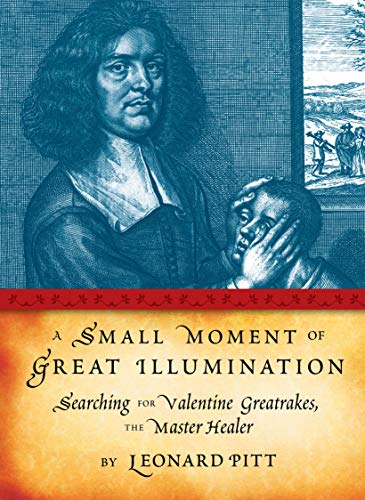
[/two_fifth][three_fifth_last] [toggle title=”A Small Moment of Great Illumination: Searching for Valentine Greatrakes, The Master Healer
Monday, April 19, 2021, 5-6:15 PM
*A live online presentation”]
Renowned for his healing powers, Valentine Greatrakes stood at the center of one of the great controversies of his age involving scientists, theologians, physicians, and philosophers. Many proclaimed his cures a miracle. Others denounced him as a quack.
Recent court battles over intelligent design affirm that the conflict between science and religion still rages, but what was the debate like in its earliest flowering? A Small Moment of Great Illumination visits England at the height of the Scientific Revolution to find the answer embodied in Greatrakes.
Claiming he could heal others simply by touching them, Greatrakes became the target for a rising contest between the clergy and laymen who would champion the emerging scientific theories of the day.
This biography traces his ascendance in the high societies of England and Ireland and his relationships with poet Andrew Marvell, philosopher Henry More, and scientist Robert Boyle.
Pitt interlaces the biography with his own adventures, Pitt’s pursuit of the Irish healer turned up many magical discoveries. Including eye–witness accounts of Greatrakes’s healing and correspondence from Greatrakes on how he discovered his powers, this book pieces together the life and times of an enigmatic forgotten figure.
A live online presentation by Leonard Pitt, author, archivist, and historian
[/toggle] [/three_fifth_last] [clear]
[two_fifth]
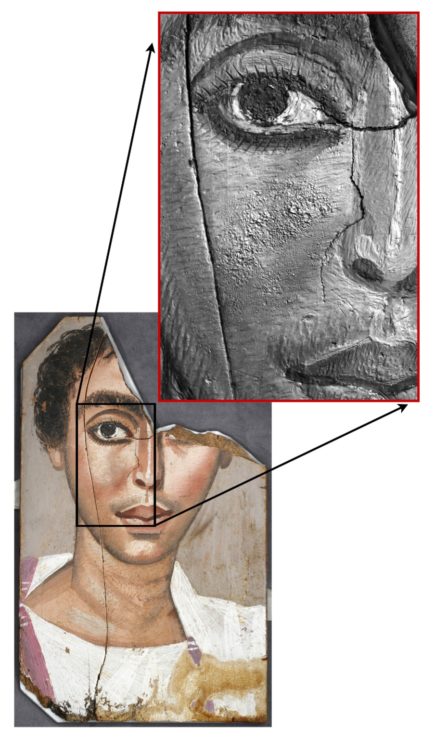
[/two_fifth][three_fifth_last] [toggle title=”Documenting and Preserving Humanity’s Cultural Legacy
Monday, April 12, 2021, 5-6:15 PM
*A live online presentation”]
This talk will present examples of existing and cutting-edge uses of photography-based imaging including Reflectance Transformation Imaging (RTI) showing fine surface details, and photogrammetry for producing 3D models. The use of these tools in a range of Cultural Heritage contexts will be shown, including fine art conservation and research of museum and library collections. Examples will include illuminated manuscripts, book bindings, locked letters, and prints.
A live online presentation by Carla Schroer, co-founder and director of Cultural Heritage Imaging
[/toggle] [/three_fifth_last] [clear]
[two_fifth]
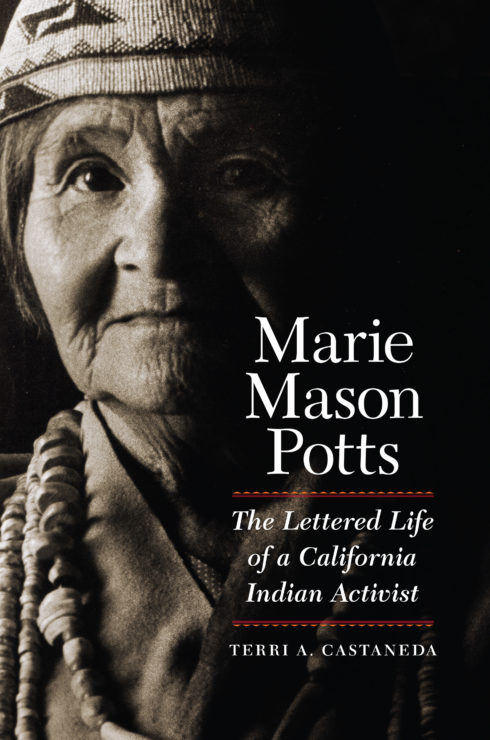
[/two_fifth][three_fifth_last] [toggle title=”Anthropologist in the Archives: Writing the Life of Marie Potts
Monday, March 29, 2021, 5-6:15 PM
*A live online presentation”]
The Mountain Maidu activist and California Indian newspaper editor and publisher Marie Mason Potts (1895-1978), based in Sacramento, California, for the last three decades of her life, left a trail of biographical breadcrumbs that stretches from her ancestral homelands in the High Sierra to the halls of Congress. Author Terri Castaneda will discuss the process of pursuing the traces of Potts’s life over the course of more than a decade, bringing to the fore the many contexts in which Potts’ written work—from off-reservation boarding school essays, to columns in the Smoke Signal of the Federated Indians of California, to her own book, The Northern Maidu—stand as a testament to her pioneering work as a California Native activist. Along the way, she will draw connections between her research and the insights to be gained from inhabiting the archives as an ethnographic field site.
A live online presentation by Terri A. Castaneda, Ph.D., professor, Department of Anthropology, California State University, Sacramento
[/toggle] [/three_fifth_last] [clear]
[two_fifth]
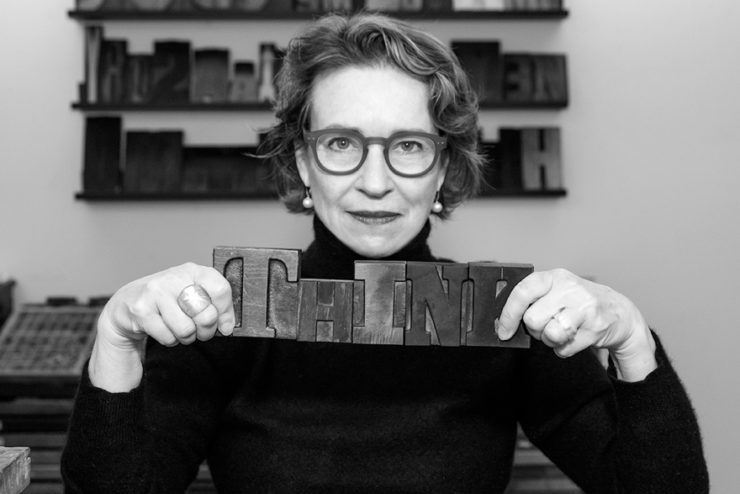
[/two_fifth][three_fifth_last] [toggle title=”Fore-Edge: Louise Fili & Lorraine Wild – Virtuosos of Typography and Book Design
Monday, March 22, 2021, 5-6:15 PM
*A live online presentation”]
With a brief nod to American women book cover designers from the 1890s through the 1930s who created thousands of book cover designs, and were influenced by the aesthetics of Art Nouveau and the Arts and Crafts Movement, Gender Neutral will focus on the work of two of the most prolific contemporary typographers and book designers, Louise Fili and Lorraine Wilde. Louise Fili was art director of Pantheon Books for eleven years, where she designed close to 2,000 book jackets. She founded Louise Fili Ltd in 1989. She is the author of Elegantissima: The Design and Typography of Louise Fili, Grafica della Strada, Graphique de la Rue, Gràfica de les Rambles, The Cognoscenti’s Guide to Florence, and Italianissimo. Lorraine Wild is the principal of Green Dragon Office, a design firm that is dedicated (mostly) to the design of books on art, photography, architecture, and other cultural subjects. Publications include Ai Weiwei: Bare Life [2019], Barbara Kruger [2011], and The World From Here: Treasures from the Great Libraries of Los Angeles [2001]. Recent projects include the design of books and exhibition catalogs for LACMA, the Hammer Museum, the Getty Research Institute, MOCA, and the Philadelphia Museum of Art.
A live online presentation by Gloria Kondrup, designer, educator, artist, and executive director of the Hoffmitz Milken Center for Typography
[/toggle] [/three_fifth_last] [clear]
[two_fifth]
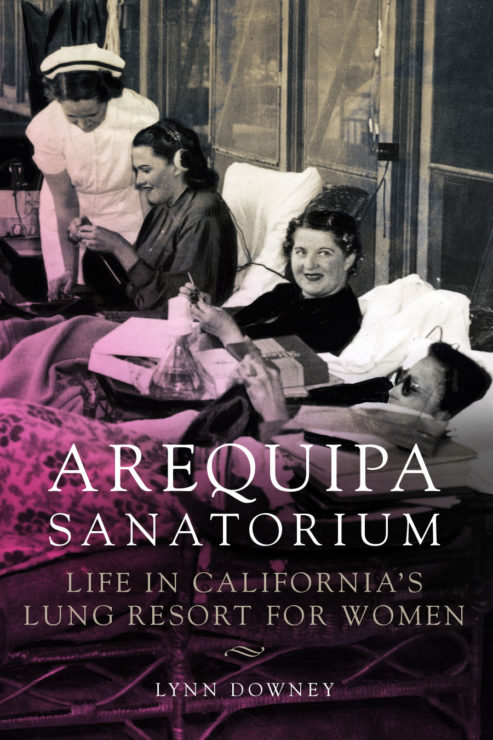
[/two_fifth][three_fifth_last] [toggle title=”Arequipa Sanatorium: Life in California’s Lung Resort for Women
Monday, March 15, 2021, 5-6:15 PM
*A live online presentation”]
As San Francisco recovered from the 1906 earthquake and fire, dust and ash filled the city’s factories, stores, and classrooms. Dr. Philip King Brown noticed rising tuberculosis rates among the women who worked there, and he knew there were few places where they could get affordable treatment.
In 1911, with the help of society women and his wife, Helen, a protégé of philanthropist Phoebe Apperson Hearst, Brown opened the Arequipa Sanatorium in Marin County. Together, Brown and his all-female staff gave new life to hundreds of working-class women suffering from tuberculosis in early 20th-century California.
Based on sanatorium records Downey helped to preserve and interviews she conducted with former patients and others associated with Arequipa, she tells a vivid story of the sanatorium and its cure that Brown and his talented team of Progressive women made possible for hundreds of working-class patients.
A live online presentation by Lynn Downey, author, archivist, and historian
[/toggle] [/three_fifth_last] [clear]
[two_fifth]
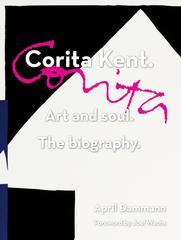
[/two_fifth][three_fifth_last] [toggle title=”Corita Kent. Art and Soul. The Biography.
Monday, March 8, 2021, 5-6:15 PM
*A live online presentation”]
Corita Kent. Art and Soul. The Biography. is the painstakingly researched account of one of America’s icons, the nun who made a world of difference and, to her surprise, simultaneously made a name for herself. The book brings readers the life story, the telling artwork, and the unmistakable spirituality of the woman who rose to fame as Sister Mary Corita in the tumultuous 1960s.
Eighteen-year-old Frances Kent joined the Immaculate Heart of Mary order of Catholic nuns in Hollywood in 1936. From the day she became Sister Mary Corita, IHM, her vision expanded, first as nun, teacher, artist, and finally as activist for social justice, distinguishing her from the norm of twentieth century women, and certainly of other women religious.
In post-World War II Los Angeles, Corita found an evolving, unfinished urban environment, full of raw material for her increasingly colorful and textual prints. With a unique calligraphic style and a playful spirit, Corita’s constructions or deconstructions of word and image shook up an art establishment that didn’t quite know what to do with a nun’s bold interpretation of her society.
After Vatican II, Corita and her Immaculate Heart sisters enthusiastically embraced the church’s calls for reform. But ecclesiastical authorities relentlessly thwarted their efforts, calling them “bad women” and forcing them into untenable decisions for their futures. For several years, Corita and her artworks became the focus of derision by the Los Angeles archbishop, Cardinal James Francis McIntyre, who found her prints offensive, even despicable.
Before her death in 1986, Corita Kent bequeathed her collection of prints to UCLA’s Hammer Museum.
A live online presentation by April Dammann, author
[/toggle] [/three_fifth_last] [clear]
[two_fifth]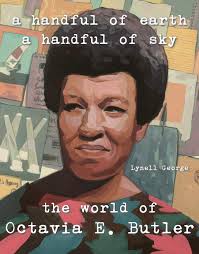
[/two_fifth][three_fifth_last] [toggle title=”A Handful of Earth, A Handful of Sky: The World of Octavia E. Butler
Monday, February 22, 2021, 5-6:15 PM
*A live online presentation”]
A Handful of Earth, A Handful of Sky: The World of Octavia E. Butler offers a blueprint for a creative life from the perspective of award-winning science-fiction writer and “MacArthur Genius” Octavia E. Butler. It is a collection of ideas about how to look, listen, breathe—how to be in the world. This book is about the creative process, but not on the page; its canvas is much larger. Author Lynell George not only engages the world that shaped Octavia E. Butler, she also explores the very specific processes through which Butler shaped herself—her unique process of self-making. It’s about creating a life with what little you have—hand-me-down books, repurposed diaries, journals, stealing time to write in the middle of the night, making a small check stretch—bit by bit by bit. A Handful of Earth, A Handful of Sky draws the reader into Butler’s world, creating a sense of unmatched intimacy with the deeply private writer.
A live online conversation between Louise Steinman, writer and independent literary curator and Lynell George, journalist and essayist
[/toggle] [/three_fifth_last] [clear]
[two_fifth]
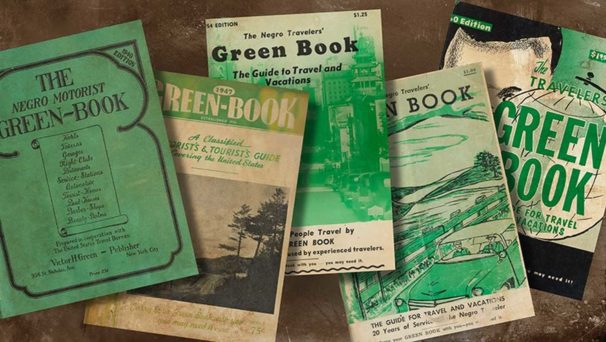
[/two_fifth][three_fifth_last] [toggle title=”The Green Book: A Black History of the American Road Trip
Monday, February 15, 2021, 5-6:15 PM
*A live online presentation”]
Historically, “road tripping” stood as a romanticized part of the American experience though this pastime did not necessarily hold the same allure for African Americans. To compensate, Victor Hugo Green published The Negro Motorist Green Book which guided black travelers to safe spaces of rest and relaxation nationwide. This talk will discuss the historic challenges of black travel and the spaces of leisure that emerged for black travelers between the 1930s and 1960s.
A live online talk by Dr. Kenya Davis-Hayes, historian and professor of history, California Baptist University
[/toggle] [/three_fifth_last] [clear]
[two_fifth]
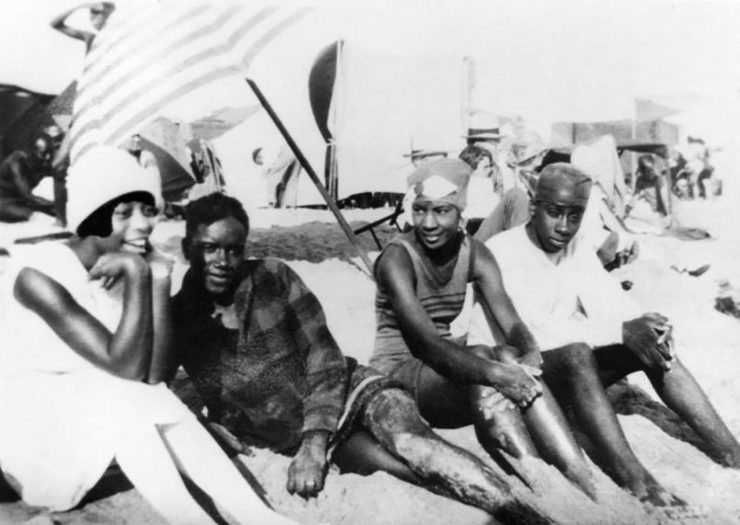
[/two_fifth][three_fifth_last] [toggle title=”Black Leaders of Leisure: Their California Dream during the Jim Crow Era and the Implications of these Stories Today
Monday, February 8, 2021, 5-6:15 PM
*A live online presentation”]
This presentation includes an overview of the author’s book, Living the California Dream: African American Leisure Sites during the Jim Crow Era (University of Nebraska Press, 2020), which takes a fresh approach to looking at the practices of relaxation and recreation at outdoor and public spaces for all people at beaches, mountains, and other scenic locales holding a central place in the long freedom rights struggle.
Leisure was not an optional add-on to civil rights but an essential component of liberty and this talk will feature the local stories of African Americans who fought for dignity, equal access and the full range of human experience and fulfillment in exploration of California’s offerings as they contributed to the state’s development.
The speaker will share how some of the sites discussed in the book are being used today to engage young people with experiential learning activities in the explorations of the African American and Mexican American experiences, heritage conservation issues, beach wildlife appreciation and stewardship, as well as aspirations to environmental justices policies involving beach access and civic action.
A live online presentation by Alison Rose Jefferson, author, historian, and heritage conservation consultant
[/toggle] [/three_fifth_last] [clear]
[two_fifth]
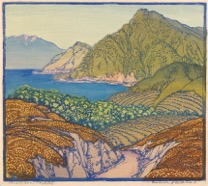 [/two_fifth][three_fifth_last] [toggle title=”Pasadena Printmaker Frances Gearhart Celebrates California
[/two_fifth][three_fifth_last] [toggle title=”Pasadena Printmaker Frances Gearhart Celebrates California
Monday, January 25, 2021, 5-6:15 PM
*A live online presentation”]
As a Pasadena artist, Frances Gearhart (1869-1959) was embedded in the time, place and ideals of the Arts and Crafts movement. Her color block prints of the California landscape personifies a handcrafted aesthetic. She was bold in her use of color and powerful in the lines of keyblock. Seasons and times of the day captivated her. She celebrated the wintry day, the morning sun on the hills, the splendor of fall. Hence the title, “Behold the Day.”
A live online talk by Susan Futterman, author
[/toggle] [/three_fifth_last] [clear]
[two_fifth]
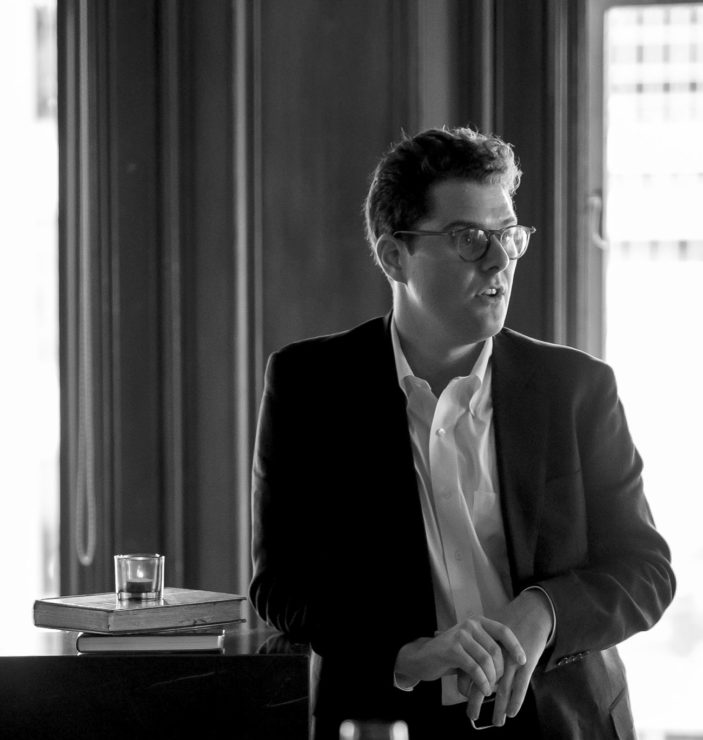 [/two_fifth][three_fifth_last] [toggle title=”The Practice of Collecting: The Life of Collections Past & Present
[/two_fifth][three_fifth_last] [toggle title=”The Practice of Collecting: The Life of Collections Past & Present
Monday, January 11, 2021, 5-6:15 PM
*A live online presentation”]
Join Collections Advisor, Spencer W. Stuart as he discusses case studies from his professional practice as well as the past to chart the life cycle of collections and the collectors who build them.
Through these examinations he will touch on important things collectors should consider at key moments of their collecting such as motivations that move one to collect, how to maintain perspective while actively collecting and finally the legacy of a collection.
Referenced throughout are the recent structural changes that have taken place in the rare books and printed material markets, resulting in a more transparent ecosystem to participate in as a collector as well as the emergence of tendencies Spencer has observed with new collectors that he feels are redefining notions of who collects and what influences their focus.
Collecting is a journey. Executed with foresight, it can be a source of both self-exploration and understanding of the World. Through his talk, Spencer seeks to inspire new collectors and reinvigorate those with an established focus.
A live online talk by Spencer W. Stuart, collections advisor
[/toggle] [/three_fifth_last] [clear]

